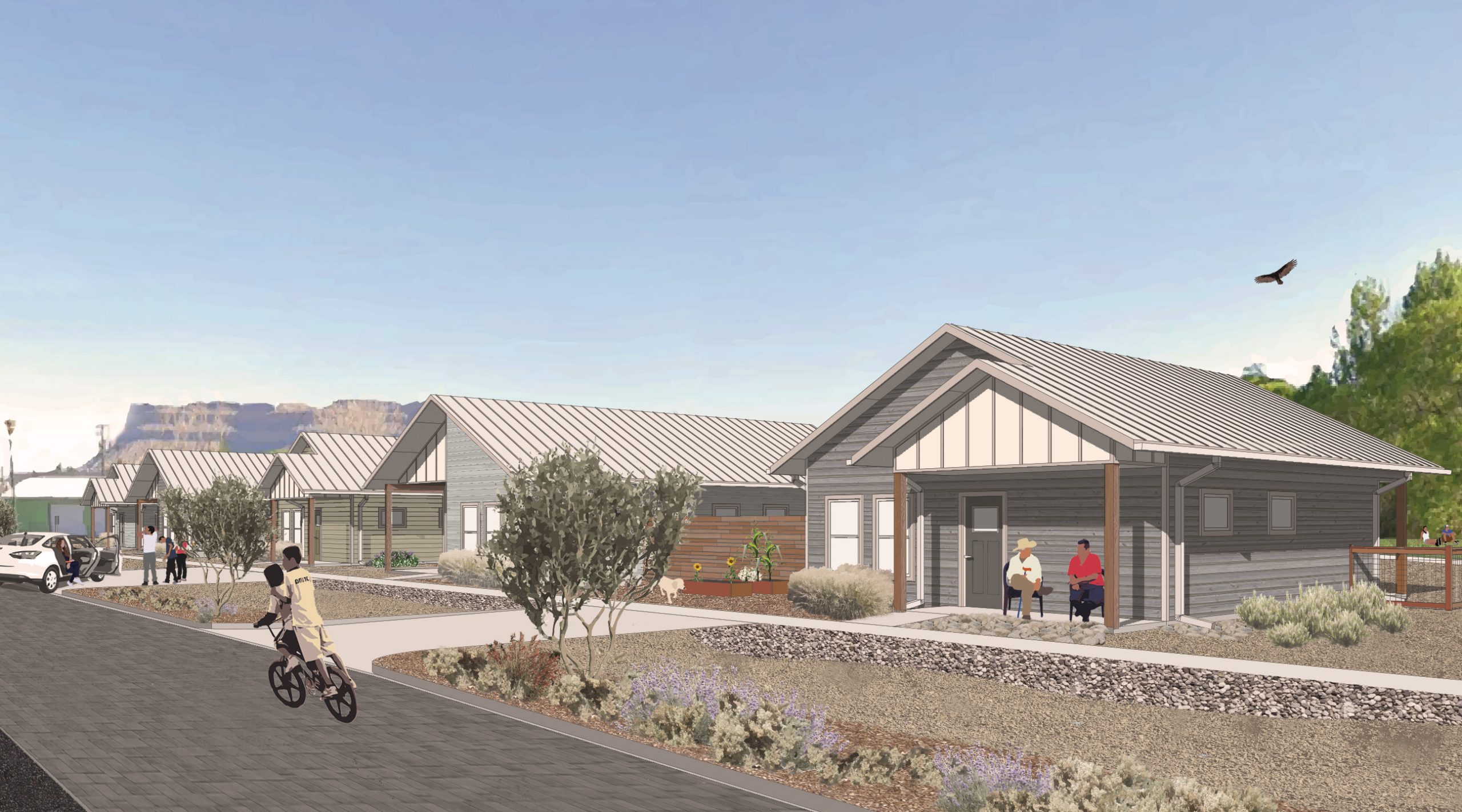Some information may be outdated.
Since Epicenter was founded in 2009 by Maria Sykes, the nonprofit’s overarching goal has been to develop affordable housing in Green River, a small town north of Moab. It’s done that in a number of ways—establishing a home repair program, building a few single-family homes—but now, the nonprofit is planning its largest project yet.
This month, Sykes announced the nonprofit was awarded $1.73 million from the Olene Walker Housing Loan Fund to develop Canal Commons, a neighborhood of 10 housing units and green spaces. Construction on the first five rental units will begin this fall.
The neighborhood will fill a critical gap in Green River’s housing crisis, Sykes said.
“There is nothing available to rent in Green River right now—if I suddenly lost my home, I wouldn’t be able to find anything,” she said. “… There’s a lot of demand for housing here.”
A recent study, conducted by James Wood at the Kem C. Gardener Policy Institute at the University of Utah, found that 84% of people who work in Green River don’t live in town—the biggest employer is the Love’s Travel Stop, which many people commute in to work at. You would think that number would be the opposite, Sykes said, that the common statistic would be that people living in Green River commute out of town. But the study showed her some of what she already knew: that housing is in critical demand for both the people who already live in Green River and for people employed in town.
“It’s shocking—and it’s like, okay, we need housing units for these jobs that are being created,” she said.
Plans for the Canal Commons neighborhood were sorted out by the end of 2019. At that point, Epicenter had held numerous community surveys to figure out what housing solutions the community wanted. The nonprofit had to strike a balance: though housing units like apartments and townhomes could house more people in less space, they wouldn’t make sense amongst the traditional homes that make up the community. Canal Commons, a neighborhood of ten multifamily units for low- and moderate-income residents, was born.
But then the pandemic introduced complications, tripling the price of materials and putting construction on hold. Even this year, Sykes said, Epicenter reached out to over 100 contractors for the project, and heard back from only four.
Epicenter has been waiting it out, Sykes said, and is excited to now begin construction this fall.
“Green River has a lot of things going on right now,” Sykes said. “It always feels like something is on the cusp … Green River has always been a waypoint, because you cannot cross the Green River for hundreds of miles. This place has to be here, in a lot of ways, for welcoming visitors and serving visitors. And there’s much more depth to the community that’s developed around that.”
“Green River is going to persist,” she said. “It’ll always be a waypoint, so I think Green River has to figure out how to hold onto its culture and not just be a pit stop.”
Appreciate the coverage? Help keep local news alive.
Chip in to support the Moab Sun News.





